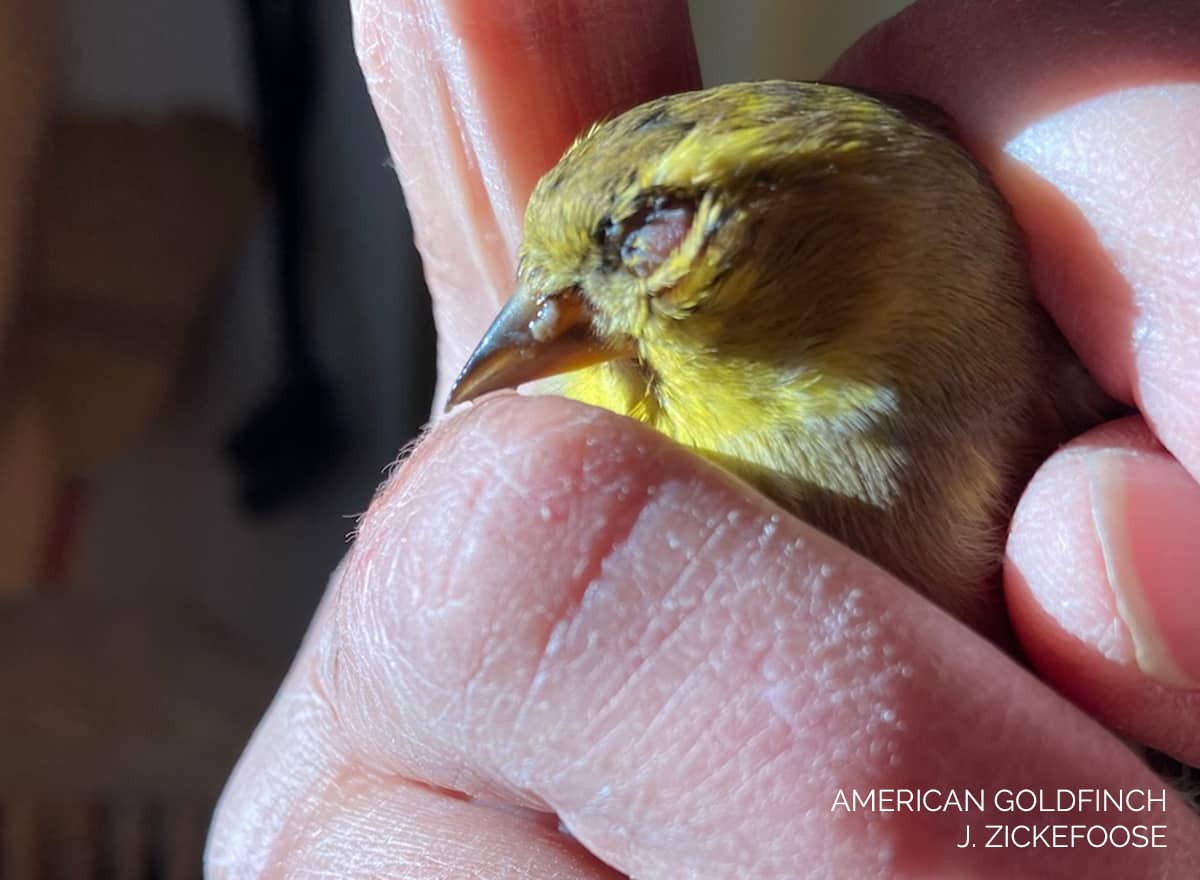
This spring has been rife with reports from backyard birders spotting finches and other feeder birds suffering from red, swollen eyes—the telltale sign of avian conjunctivitis. Bird Watcher’s Digest columnist and wildlife rehabilitator Julie Zickefoose has been treating birds with mycoplasma for many years, and she reports that this is the worst spring she’s ever experienced with the highly contagious infection.
For Julie, it all started on February 21, when she took in her first “patient,” an American goldfinch. Soon she was up to eight goldfinches. By March 14, she had taken in patient #14. And there were still more outside she had yet to catch.
Julie has written three blog posts so far about her experience, what mycoplasma is, which birds it affects, where it came from, and how to help stop its spread. We urge you to read “Goldfinch Hosptial” and its follow-up posts here, here, and here.

But in case you don’t have time at this moment to delve into her story (in which Julie brings you right into her home and her yard with carefully curated words, photos, and video, as she always so deftly and delightfully does on her blog), take a minute to read these excerpts:
From “Caught in the Whirlpool”:
I implore you, if you’re still with me, don’t glance out at your feeders, see lots of birds sitting on them, and assume they’re all fine. Take the time to get out your binoculars and really look at each eye on every bird. If you see squinty eyes, dull eyes, messed up feathers on the head, or swollen, closed, blind eyes, you have Mycoplasma in your flock. If a bird has one closed eye, within a week, both will close. And if you’re feeding birds with Mycoplasma, you’re just inviting healthy birds in to catch and spread it. You are creating a bacterial hotspot, and luring birds in to get infected.
And from “Miracle on the Patio”:
And so I ask you, if you’re seeing sick finches—house or gold—with swollen, closed eyes, please harden your heart and take your feeders down. Allow the birds to disperse. Don’t invite them into a place that’s teeming with Mycoplasma. They’re better off foraging naturally, dispersed and socially distanced. Soak your feeders in a joint compound bucket with detergent and bleach (one part bleach to 10 parts water, or a good healthy glug for a full bucket). Let them soak for 15 min, and soak all parts—flip them over if they’re too long to submerge completely. Rinse them and put them away for a few weeks, or—as I do now—for the spring and summer. You might need to bust them back out for that March or April snowstorm, or that cruel May freeze, and you’ll be glad you disinfected them if you do.
We know it’s a difficult decision to take your feeders down, but much like with the current pandemic we humans are enduring, sacrifices must be made for the safety and health of the greater population.

Looking to Subscribe?
Get 6 print issues of the magazine delivered to your door
& free digital access
- One Year Print Subscription: $26
(to US or Canada, includes digital access) - One Year Digital-only Subscription: $15
- Two Year Print Subscription: $48
(to US or Canada, includes digital access)



